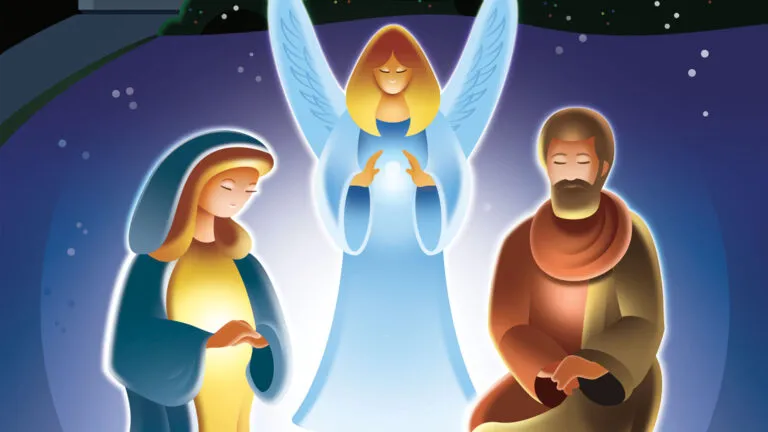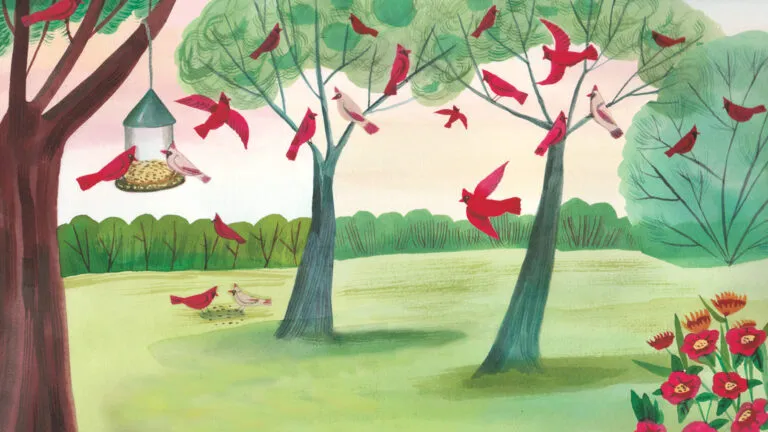Most people who knew Bill Martin, a high school student in Bowie, Maryland, knew he was a Civil War buff. His interest started because of his father, Bill, Sr., who read all sorts of books on American history. Bill and his family visited battlefields across the country, including Shiloh in southwestern Tennessee. There he learned about the geography of the area, the events leading up to the battle and the staggering death toll suffered on both sides.
After returning from their trip, Bill and his mother, Phyllis, discussed the battle over dinner. “A colleague of mine told me something we didn’t hear about on our tour,” Phyllis said. Bill was all ears.
Some of the fallen soldiers’ wounds were said to have emitted a mysterious glow, and those soldiers were more likely to survive. Shiloh National Military Park was never able to confirm that anything of the sort took place, but the story spread so rapidly, it became something of a Civil War legend. What was this phenomenon that history had dubbed the Angel’s Glow?
Phyllis was a microbiologist for the USDA Agricultural Research Service in Beltsville, Maryland. Her research focused on bioluminescent bacteria—microorganisms that produce light—particularly the kinds that live in soil. One variation she studied, called Photorhabdus luminescens, emitted a blue glow. “My colleague wondered if bacteria had anything to do with the soldiers’ glowing wounds,” Phyllis said. “We may never know. It’s not something that scientists are clamoring to research.”
But Bill recognized an opportunity. “Do you think it’s possible it was bacteria?” he asked his mom. Being the family scientist, Phyllis replied, “Well, you can do an experiment and find out.”
In early April 1862, Union soldiers under the command of General Ulysses S. Grant were camped along the west bank of the Tennessee River in Hardin County. Their objective was to take over a nearby rail center that would give the Union control of the region. Before the reinforcements arrived, the Union soldiers were attacked by Confederate troops led by General Albert Sidney Johnston. What followed were two days of intense combat. On April 6, furious fighting took place in a local peach orchard.
But by April 7, with reinforcements, the Union secured a victory. The battle was over, but not without heavy human cost. The number of casualties was staggering: more than 23,000 Union and Confederate soldiers combined.
Combat doctors were unprepared—more than 16,000 wounded men needed care. Many of them lay sick and dying in the muddy fields, waiting for a medic or a bed. One evening, as dusk fell on the field of Shiloh, some of the soldiers noticed that their wounds were glowing a light blue.
It is believed that these wounds were cleaner and less prone to infection. Almost as if an unearthly power was protecting the soldiers. None of this was documented at the time, but it eventually became part of Civil War lore.
All these years later, the Angel’s Glow was still a mystery. Were there really angels in the battlefield at Shiloh? Or was it the work of a helpful bacteria? Bill resolved to find out.
Enlisting the help of his friend, Jonathan Curtis, Bill set out to find an answer. He handled the historical aspects of their project, and Jonathan focused on the science, with Phyllis advising. The boys’ research showed that the soil at Shiloh was a perfect breeding ground for P. luminescens bacteria. They put this bacteria in a petri dish with other infectious bacteria and found that it killed off dangerous pathogens. P. luminescens, while infectious, is not very dangerous to humans. It actually cleaned the soldiers’ wounds of the more harmful germs and stopped infection from spreading. Mystery solved?
Not so fast. The boys’ lab experiments showed that human body temperature was way too warm for P. luminescens to flourish. The bacteria needed colder temperatures to survive. Then how did these glowing bacteria thrive? Bill and Jonathan turned to the battle’s weather reports. Nighttime temperatures in Tennessee during early spring created some chilly conditions. The body temperature of a soldier exposed to the elements all night would have dipped dramatically.
To test their theory, Bill and Jonathan went outside on a cool spring day and sat in the rain. Using an infrared thermometer, the boys checked the surface temperatures of their legs. The temperature was low enough for P. luminescens to thrive! The wounded soldiers at Shiloh would have been even colder. Hypothermia created the very conditions the bacteria needed to survive. It seemed that the soldiers in the most danger were the ones who received a saving grace.
Even after the experiment was completed, Phyllis’s colleagues continued to approach her with their own theories about the Angel’s Glow. One friend who studies nematodes, a microscopic organism that creates P. luminescens, told her they often contaminate peaches. He wondered if Shiloh’s peach orchard, where part of the battle took place, had anything to do with the presence of the lifesaving bacteria. Even now, there’s so much left to discover.
Bill and Jonathan presented their research at the 2001 Intel International Science and Engineering Fair. They won first place in team competition for tracing the nearly 140-year-old mystery to bacteria.
For the wounded soldiers, survival was nothing short of miraculous. Writer Ambrose Bierce, who fought in many Civil War battles, including Shiloh, wrote that “God’s great angels stood invisible” among the soldiers. Invisible, yes, but still doing their divine work.
Did you enjoy this story? Subscribe to Angels on Earth magazine.





